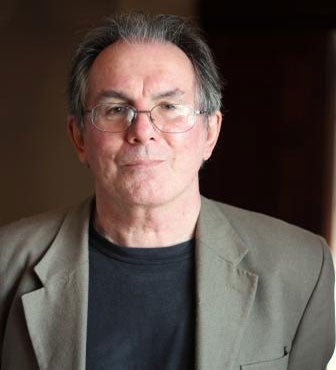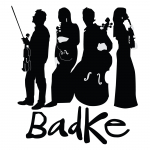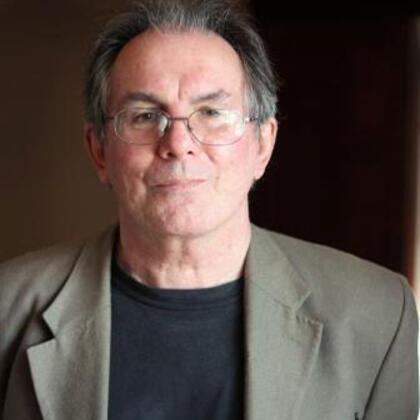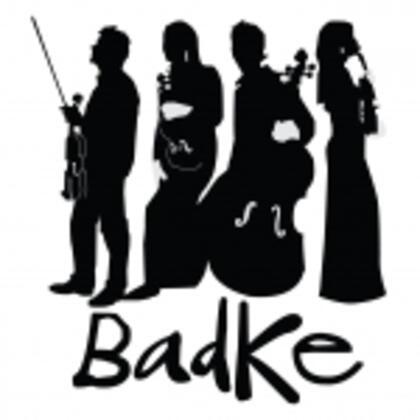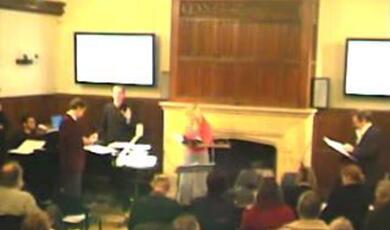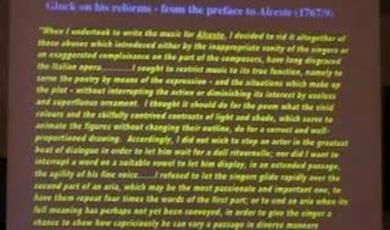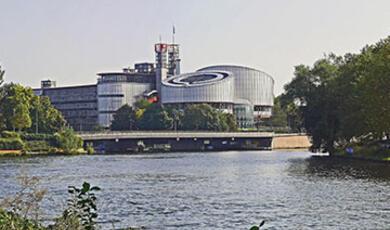Wolfgang Amadé Mozart, K 421 in D minor
Share
- Details
- Transcript
- Audio
- Downloads
- Extra Reading
This is one of Mozart's six so-called "Haydn" quartets, dedicated to his famous predecessor and, as Mozart admitted in the dedication, the fruit of "langer und mühsamer Arbeit" (long and arduous work). The D minor quartet was probably completed in 1783 and its minor key first movement shows much evidence of that "Arbeit" in its strange reversals of usual quartet practice, with a lyrical, song-like opening that then breaks down into instability as the movement progresses.
Download Transcript
Mozart Quartet in D minor, K. 421
Professor Roger Parker
22/4/2010
Up to now in this series of lectures we've been in the company of Joseph Haydn: to be precise with three of his Op. 76 quartets, written in the middle of the 1790s when Haydn was approaching the pinnacle of his international fame and fresh from foreign triumphs in Paris and London. As mentioned in the last lecture, his return to quartet writing at this stage of his career might be thought something of a surprise: much of his energies in this Indian summer, when he was famous as never before, was taken up, as befitted the most celebrated composer in Europe, with grand choral works. Haydn 's continuing loyalty to the string quartet had, then, something to do with the ensemble 's gathering prestige; but perhaps in particular it was connected with Haydn 's desire to continue one of the great emulative relationships in the history of music: that between him and his prodigious young contemporary, Wolfgang Amadé Mozart. Today 's quartet is one of Mozart 's most celebrated compositions, his quartet in D minor K.421; it might be useful, in the context, to talk for a while about the relationship between these two great musicians, who were born almost a generation apart but whose music has become curiously entangled.
How did it happen? Haydn and Mozart didn't meet until some time after Mozart moved from provincial Salzburg to Vienna in 1781, and-although they professed friendship-they only saw each other intermittently thereafter. Mostly this was by force of circumstance, and underlines their very different career trajectories. Mozart 's decision to move to Vienna was, for the period, a radical one, full of uncertainty. He no longer relied on a fixed position, with regular income guaranteed by the church or court or nobility, but on a more precarious, "freelance" existence, cobbling together an income through performing, teaching, concert organizing, publication fees and commissions for operas and other grand works. Haydn would himself have this kind of existence thrust upon him in the 1790s, when his long-time noble employer, Prince Nikolaus Esterházy, died and was replaced by an austerity-driven successor; but during the 1780s he was still a salaried employee of the Esterházy family, and mostly sequestered in their vast estates far distant from Vienna. His visits to the Austro-Hungarian capital were mostly restricted to the weeks around Christmas.
Although Mozart 's frequent foreign expeditions caused him to come across Haydn 's music several times before the 1780s, it 's likely that a set of Haydn 's string quartets, his Op. 33 collection, published at around the time Mozart arrived in Vienna, were decisive in firing the younger composer 's creative imagination. Mozart had by that time not written quartets for the best part of a decade, but he soon set to work on six quartets of his own, the second of which is the D minor quartet we're focusing on today. His set of six was eventually published in 1785, and its dedication was to none other than Joseph Haydn. The quartets had, Mozart confided to his purchasers, been "the fruit of a long and laborious endeavour", and while this might be thought the usual publishers' hype, the trouble these pieces gave him are revealed by his autograph scores, which sit a mile away from here in the British Library, and"unusually for Mozart"betray ample evidence of second thoughts and busy revision. What 's more, the usual practice in such publications was to dedicate the collection to a noble patron-a person who would be expected to pay for the privilege, and often retained exclusive, pre-publication use of the compositions for a stipulated time thereafter. But Mozart instead dedicated them to Haydn, who he called "a very celebrated Man" but "at the same time his best Friend". He even went so far as to address Haydn directly, saying that: "Your good opinion encourages me to offer them to you and encourages me to hope that you will not consider them wholly unworthy of your favour". Of course, we should not read too much into this: Haydn was, after all, already famous, and famously 'serious' as a quartet composer; several other composers had dedicated quartet collections to him, trusting that his name to stress the diligence of the maker. However, there is further, anecdotal evidence to suggest that the connection between the composers was more than merely one of convenience.
Around the time these Mozart quartets were coming into being, the composer 's father Leopold, a famously stern critic of his son 's behaviour, was visiting Vienna. On two separate occasions near the start of 1785, and with Leopold in attendance, Mozart took advantage of Haydn 's presence in Vienna to have a quartet evening in which his new compositions in the genre could be displayed. The quartet line up was, well, "distinguished": Haydn and the composer Dittersdorf were the violinists, Mozart himself took the viola part, and Vanhal, another master composer, was on cello. The Irish tenor Michael Kelley, who sang in the premiere of The Marriage of Figaro a year later, reported in his memoires that "the players were tolerable, [but] not one of them excelled on the instrument he played". He did, though, allow that "there was a little science among them", and admitted to enjoying himself hugely, particularly when later he was asked to sing a comic ditty or two. Leopold Mozart reported on the second event in a letter to his daughter, Mozart 's sister Nannerl, in more sober detail, and added one priceless quotation he had gleaned from Haydn:
The new quartets were played or, rather, only the three new ones that he 's added to the three we already have;"they're a bit easier but still admirably composed. Herr Haydn said to me: I say to you before God and as an honest man that your son is the greatest composer known to me either in person or by name; he has taste and, what 's more, the greatest knowledge of composition.
In spite of Haydn 's revealing choice of words, reminding us with its reference to "taste" and "knowledge" (rather than "passion" or "profundity") of the enormous aesthetic distance between an eighteenth-century conception of "greatness" and ours, we can at least feel sure that Leopold, a hard man to like in many circumstances, glowed with paternal pride.
So: we've heard three of Haydn 's Op. 76 quartets, and now we're about to hear a quartet by Mozart that was inspired by Haydn 's earlier models. What, then, are the major differences between Mozart 's and Haydn 's music? As someone once said (and I have reason to recall it all too frequently), "it 's easy to ask the hard question"; and this one, let 's admit it, is damned hard. The textbooks will mostly just give you generalities, ones no more informative than those old nineteenth-century fantasies about the "eternal child" vs "papa Haydn"; or they'll go into levels of technical detail which alienate the non-specialist, and which respond to the question in terms so narrowly defined that they come close to making any argument circular. Nor do eighteenth-century comparisons seem to help much. As it happens, Dittersdorf, he of quartet-playing fame, got into a conversation on just this topic with none other than the Austrian Emperor, Joseph II: that same Emperor who, famously, had earlier taxed Mozart and his German opera The Abduction from the Seraglio for being "too beautiful for our ears, and far too many notes, dear Mozart". As might expected when the interlocutor was of such enviable distinction, Dittersdorf recorded the conversation for posterity. His opening gambit was to employ a tactic beloved of the eighteenth century: one of elaborate simile. Mozart, he opined, was like the poet Klopstock, in that "one must read the works over and over again", while Haydn was closer to the poet Gellert, whose "merits are patent at the first glance". The Emperor 's idée fixe about too many notes was, it seems, undimmed since that Seraglio experience: he replied by reminding Dittersdorf that: "In his theatre pieces, [Mozart] committed the sole mistake-as his singers often complained-of drowning them with his full accompaniment". But he then moved the simile tactic into what we can assume was for him more familiar territory. "I compare Mozart 's compositions to a gold snuff-box, manufactured in Paris", he said, "and Haydn 's to one finished off in London". So there we have it; all we need are a pair of snuff-boxes, and all will be clear; at least in that madly logical eighteenth-century way. Barring such material clarification, though, what becomes clear is that, for both Dittersdorf and the Emperor, Mozart was above all intricate and above all difficult.
Having gently made sport with these noble attempts to arrive at a comparison, I'm not sure how much further I can go myself. However, one way of tackling the topic from the 2010 perspective, is to think about one quite striking difference between the two composers. It has to do not with quartets, at which they both continue to amaze us, but with opera, at which one excelled and the other has proved sadly wanting. Is this, I wonder, a possible key to their difference?
Haydn 's first biographer, Griesinger, reported the great composer's self-assessment of his worth, namely that "instead of so many quartets, sonatas and symphonies [I] should have composed more vocal music, for [I] could have become one of the leading opera composer". We shouldn't read too much into this, even though posterity has made it seem bizarrely mistaken. Opera in Haydn 's day, although not for much longer, still automatically occupied the high table in terms of aesthetic prestige; Haydn was acutely aware that 'quartets, sonatas and symphonies- were piddling, occasional works by comparison. What 's interesting, though, is that he seems to have felt he needed more operatic practice: in all he wrote thirteen Italian operas as well as several comedies and German-language Singspiel pieces; this seems like a fair apprenticeship. But almost all of them were written for that gilded cage called Eszterháza, the remote backwater where he was sequestered for all those years with his noble patron. What might have happened had Haydn been there in cosmopolitan Vienna, with Mozart to emulate and Da Ponte to write him librettos' It 's one of the great unknowns of musical history, and has encouraged much easy speculation, particularly of the -if only- kind: if only he'd been less isolated; if only he'd had decent librettos. But neither lament is particularly convincing: as we can tell from those symphonies and their endless invention, Haydn had plenty of chances to keep up-to-date in musical matters, after all; and as for bad libretti, almost all libretti are judged "bad" when the music for which they're intended doesn't work too well-words are far too easy a target.
One thing is certain: asking "why didn't Haydn 's operas survive?" is the wrong question. With the partial exception of Don Giovanni (and that for special reasons), no operas from this period survived through the nineteenth century. The proper question is: "why haven't they been re-invented recently?", as-for example-Mozart 's have been, and so completely as to become a staple of the modern repertory. One possible explanation goes like this: opera in its late eighteenth-century vintage played easily into Mozart 's great strength, which was to capture a mood or character perfectly: to spin out a musical idea and then place it in vivid contrast with other, equally crystalline inspirations. Haydn, on the other hand, was mostly deprived of his greatest strength, which was in thedevelopment of musical material. Mozart 's development sections can sometimes (not always!) be a little dull, a little dutiful; Haydn 's, though, are often his greatest glory, and developmental writing tends to invade every part of his movements. Perhaps there 's something significant in that: Haydn 's genius was above all in what we might call "the art of transition", and it was an art that he couldn't display in opera as it was in the eighteenth century. Imagine what might have happened had he been born a century later, in the 1830s. By that time, the operatic art of transition was ripe for development: opera, German-language opera in particular, was for the first time becoming symphonic.
This difference between the two composers, most obvious in their operatic works, can also be seen in their quartets, but is more subtle: in particular as Mozart was self-consciously adopting Haydn 's model, his genius for development and transition, in approaching this medium. An obvious example, though, comes by comparing the opening of today 's quartet, Mozart 's in D minor, with the D minor quartet from Haydn 's Op. 76, which we discussed and heard two lectures ago. Haydn 's first movement, if you recall, opened with what is unmistakably a motive: a simple succession of falling fifths (SING) which then forms the basis if almost every subsequent bar: new ideas may emerge, but they are underpinned-in the most audible manner-with that falling fifth. Mozart, on the other hand, begins his D minor quartet with what is unambiguously a melody in the first violin: something that 'sings' within the range of the human voice, but perilously so-with its leaps of the octave down and then the tenth up, it is at the extreme of singability, an extreme that constitutes much of its beauty and expressivity. It is, I think, impossible to imagine Haydn composing such an opening, just as it is impossible to think of him writing the wonderful Andante slow movement that follows, which is another kind of operatic aria for the first violin, disarmingly simple and direct in its appeal to the listener.
But how, then, does Mozart involve the other instruments: how does he emulate Haydn 's emancipation of the string quartet, his eminent seriousness of purpose? At least part of the answer, I think, is in the way that his first violin melodies are constantly embellished with imitative gestures from the other three instruments. A marvellous example is the slow movement, which is practically constituted by this kind of embellishment: the first violin initiates a simple melody, and its gestures are then echoed by the other three instruments in turn, thus extending the musical idea far longer than it would otherwise last. You'll hear this again and again in the quartet: a kind of panning gesture as the material passes from instrument to instrument. To put this another way, Haydn 's most characteristic quartet movement constantly tend towards the condition of fugue: the condition of absolute equality. Mozart 's, on the other hand, are typically melodies with ever more fantastic and varied embellishment: so much so that, in the end, all the members of the quartet are singing their hearts out.
Time presses, but I'll leave you with a couple more possible meanings that history has wrapped around this D minor quartet. One comes from the reminiscences of Mozart 's wife Constanze, who made quite a career as a professional widow in her fifty years left to her after Mozart 's early death. Here 's how an early biographer reported the tale: "When Mozart was composing the second of the six quartets dedicated to Haydn, his wife was in labour for the first time. He worked in the same room where she lay. Whenever she gave voice to her suffering, he came to her in order to console her and cheer her up; and when she was calmer he returned to his manuscript. The Menuet and Trio were composed exactly at the time of the delivery." (AMZ, 1799) One can already see some powerful myth-making in progress here: Mozart is painted as the near automatic writer, the "eternal child" to whom music arrives no matter what the circumstances; but also (and neatly inserted) is the idea of Mozart the proto-Romantic, the composer whose music could also express the "real" emotions that surrounded him. Whichever strand you choose, this Minuet is indeed unusually painful and chromatic, preserving minor key angularity throughout. The Trio, though, is in stark contrast: a bouncy, yodeling theme in the first violin. It takes more ingenuity than I possess to wrap this into the childbirth scenario; but of course feel free to let your imaginations roam.
One final meaning, created around the same time as Constanze 's reminiscence (the start of the nineteenth century, only a few years after Mozart 's death), returns us to the D minor quartet 's first movement. It was penned by the Belgian composer and music theorist Jérôme-Joseph de Momigny and used as an exhibit in his Complete Course in Harmony and Composition. Here 's part of what he said:
The style of the Allegro moderato is noble and moving. I thought that the best way in which to make clear to my readers its true expression was to attach some words to it. - I have tried to make it clear that the feelings expressed by the composer were those of a woman in love who is about to be abandoned by the hero she adores: Dido, who had a similar misfortune to lament, came immediately to mind. The elevation of her station, the ardour of her love, the celebrity of her misfortune-all of these made me decide to make her the heroine of the plot.
True to his word, in the accompanying musical example Momigny grafted a kind of Gallic Dido 's Lament on to Mozart 's first-violin part. Virtually every musical phrase in the first movement is underpinned with a phrase of dramatic text. His reading unquestionably accepts the possibility of translation from one medium (music) to another (words). As he says a little later "Many people think that the language of Orpheus is a vague idiom and that in music, as in the clouds, one sees everything that one wants to see. If it were thus, would one note make us shed tears while another makes us shudder?"
There is, I think, much to ponder here. The reasons why we now find Momigny naïve, even risible, are interesting, demonstrating how pervasive the idea of "pure", or at least "abstract", musical communication has become over the two centuries since Mozart 's death. But then the idea of Mozart, and of the transcendent beauty that his music seems now to communicate to us, has been one of the most important elements in this emerging sense of "abstract" music. It is, then, small wonder that works such as the D minor String Quartet can still furnish ground for debate: a site within which we can think once again about those eternal, never-to-be-resolved questions surrounding the vexed issue of musical meaning.
Those of you present last time will remember that illness had struck one member of the Badke Quartet, and that a substitute had nobly stepped in. This time, given their travel schedules and the Icelandic Cloud still hovering over all of us, it 's a small miracle that any one of them has managed to make it here, let alone all four. But, at least when I last checked, they were indeed all present and correct. Please join me, then, in welcoming them onstage: Heather Badke, first violin; Emma Parker, second violin; Jon Thorne, viola; and Jonathan Byers, cello.
Badke Quartet plays
©Professor Roger Parker, Gresham College 2010
Part of:
This event was on Thu, 22 Apr 2010
Support Gresham
Gresham College has offered an outstanding education to the public free of charge for over 400 years. Today, Gresham plays an important role in fostering a love of learning and a greater understanding of ourselves and the world around us. Your donation will help to widen our reach and to broaden our audience, allowing more people to benefit from a high-quality education from some of the brightest minds.


 Login
Login
